Discover 11 hidden attractions, cool sights, and unusual things to do in Loughton (United Kingdom). Don't miss out on these must-see attractions: Epping Forest, Loughton Camp, and Gilwell Oak. Also, be sure to include Great Monk Wood in your itinerary.
Below, you can find the list of the most amazing places you should visit in Loughton (England).
Table of Contents
Epping Forest
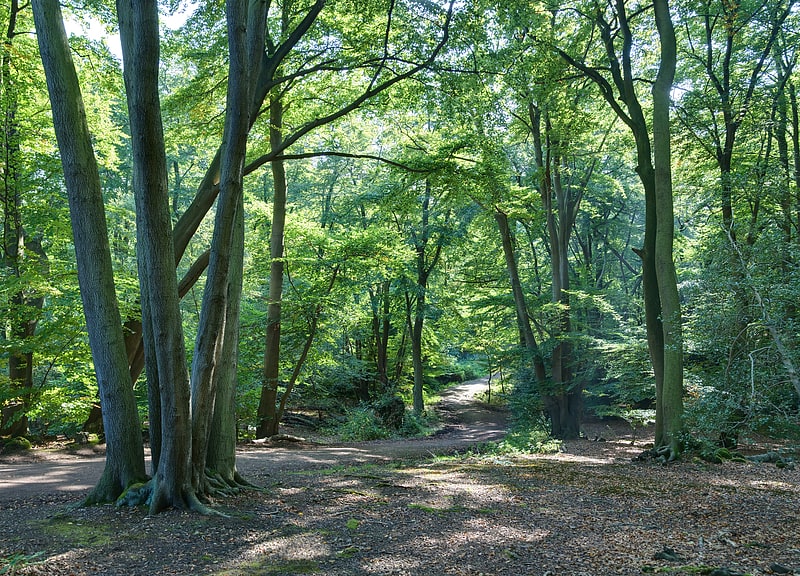
Ancient woodland with lakes and ponds. Epping Forest is a 2,400-hectare area of ancient woodland, and other established habitats, which straddles the border between Greater London and Essex. The main body of the forest stretches from Epping in the north, to Chingford on the edge of the London built-up area. South of Chingford the forest narrows, and forms a green corridor that extends deep into East London, as far as Forest Gate.
It is a former royal forest, and is owned and managed by the City of London Corporation. An area of 1,728 hectares (4,270 acres) is a Site of Special Scientific Interest and a Special Area of Conservation. It gives its name to the Epping Forest local government district, which covers part of it.
It lies on a ridge between the valleys of the rivers Lea and Roding. It contains areas of woodland, grassland, heath, streams, bogs and ponds, and its elevation and thin gravelly soil (the result of glaciation) historically made it less suitable for agriculture.
The forest was saved from destruction in the late 19th century after popular protests prompted the City of London to take legal action to prevent enclosure.[1]
Loughton Camp
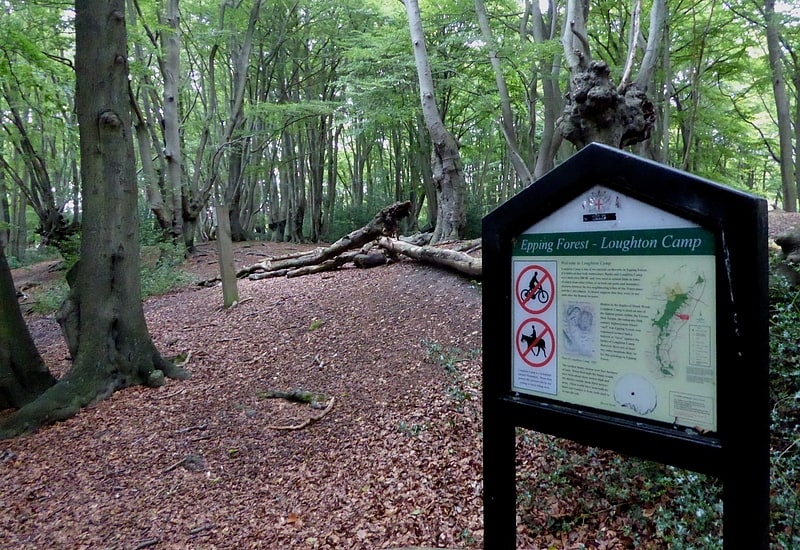
Historical landmark in Loughton, England. Loughton Camp is an Iron Age Hill fort in Epping Forest, one mile northwest of the town of Loughton.
The camp's earthworks cover an area of approximately 10 acres (4 hectares) and are visible today as a low bank and ditch encircling the main camp. The banks were most probably once a single high rampart, used for defence and the appearance of the ditch suggests it was once very wide and deep in places.
The camp lies on one of the highest points in the surrounding area, on a ridge of high ground, likely to have once been strategic. It is speculated that the camp was used by the Trinovantes in defence against the Catuvellauni. Its elevation suggests that the camp was possibly once a lookout post. However, it may have simply been used as fortification for protection of cattle. A stone Iron Age grain millstone (quern) was found close by. More colourfully, local legend has it that Boudica used the camp, and that Ambresbury Banks was the site of her defeat in AD61 however there is no evidence to corroborate this.
The southwestern edge of the camp falls away sharply to an area known as Kate's Cellar (a hermit who reputedly once lived in this area of the forest). An early 19th Century map shows Dick Turpin's hideout here (there are a number of locations within Epping Forest's 6,000 acres (24 km2) which claim the same).
The camp was 'discovered' by Mr Benjamin Harris Cowper in 1872. The first archaeology carried out was by General Pitt-Rivers in 1881. In 1882 the Essex Field Club further excavated the banks.
Roger Nolan, in his Julius Caesar's Invasion of Britain (2018) says there is no doubt that Loughton Camp was the third marching camp used by Caesar in his invasion of 54BC, en route from Kent to the defeat of the British tribes at Wheathampstead (Devil's Dyke). The Loughton site has never been comprehensively excavated; any proof of this might be apparent from such an excavation.
A corresponding camp Ambresbury Banks exists closer to the town of Epping. Both are Scheduled Ancient Earthworks and, as such, must only be explored on foot.[2]
Gilwell Oak
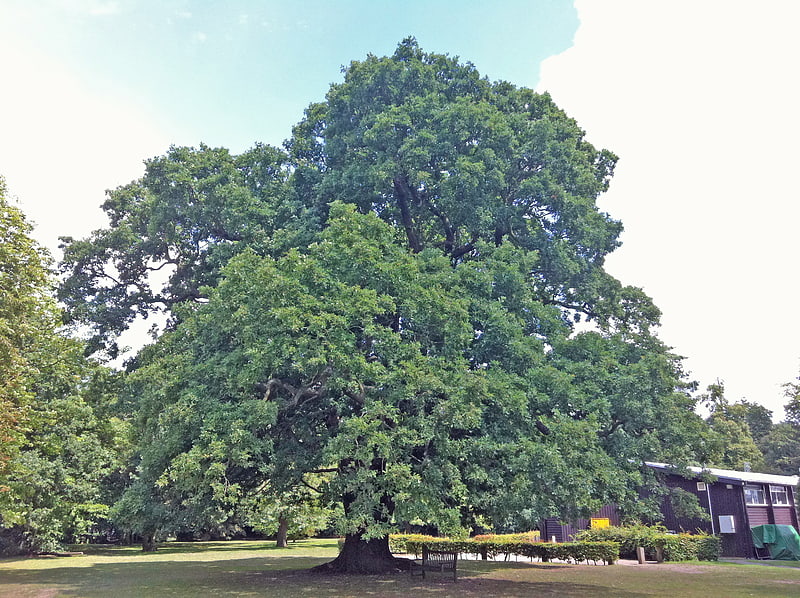
The Gilwell Oak is an oak tree on the grounds of The Scout Association's headquarters at Gilwell Park, Essex. It is reputed to have been used as a hiding place by Dick Turpin and since the 20th century has become closely associated with the Scout movement. The tree is situated close to the training ground for the association's first Scout leaders and provided material for the earliest Wood Badges. The oak inspired Scout movement founder Robert Baden-Powell to create "the moral of the acorn and the oak" an analogy for the growth of the Scout movement and the personal growth of its members. The Gilwell Oak was voted England's Tree of the Year by the public in 2017 and was subsequently selected by a panel of experts as the UK Tree of the Year.[3]
Great Monk Wood
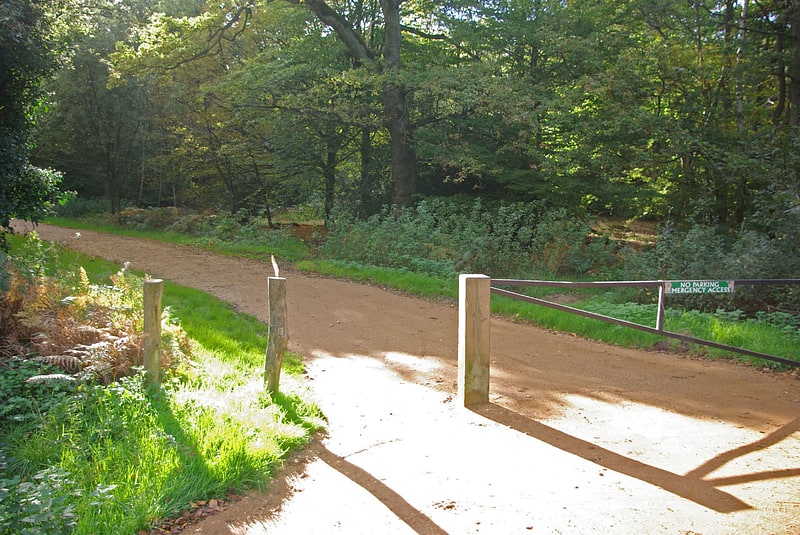
Great Monk Wood is a wood within Epping Forest, in Essex, England.
The wood, in the parish of Loughton, is centred on the Wakes Arms junction roundabout of the A104 Epping New Road, and the A121, and is southwest from the town of Epping and north from Loughton. The London orbital M25 motorway skirts the wood at its north. The nearest significant villages are High Beech, which is southwest within Epping Forest, and Theydon Bois to the east outside the Forest.
Nearby railway or tube stations include Chingford, Buckhurst Hill, Loughton and Theydon Bois.[4]
Loughton Hall
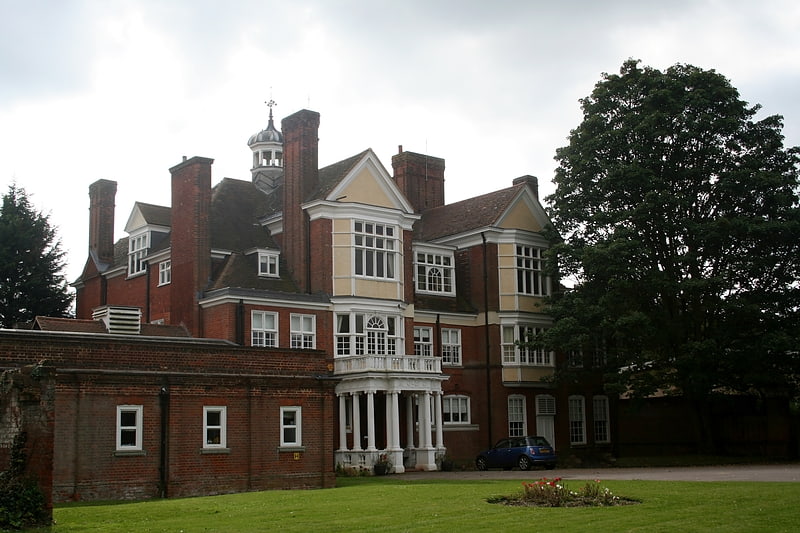
Loughton Hall is a large house in Rectory Lane, Loughton, Essex. The architect was William Eden Nesfield, and it is grade II listed with Historic England. It is now a 33-bedroom residential care home for elderly people.[5]
Vange Hill

Nature reserve in Basildon, England. Vange Hill is an 11.5 hectare Local Nature Reserve in Vange, a suburb of Basildon in Essex. It is owned and managed by Basildon Borough Council.
The site has grassland and scrub woodland, surrounded by a drainage ditch. Some meadow areas are closely mown, but others are only cut annually, allowing flowers to grow provide food for bumblebees and butterflies. There are unusual plants such as Pale Flax.
There is access from Vange Hill Drive.[6]
Gilwell Park
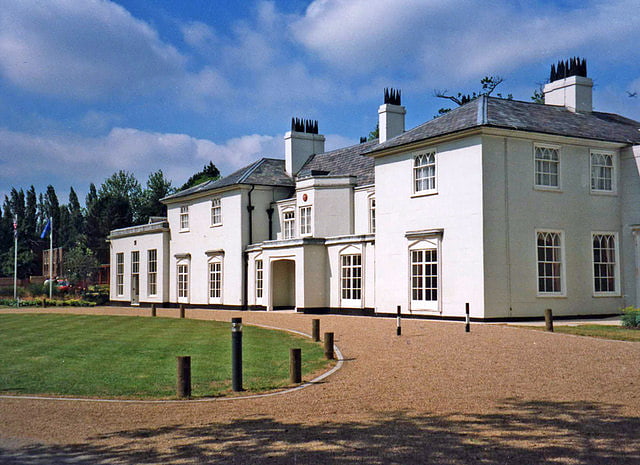
Gilwell Park is a camp site and activity centre for Scouting and Guiding groups, and is the home of leadership training in the Scout movement. The site is also used by schools and other youth organisations and hosts social events such as weddings and birthday parties. The 44 hectare site is in Sewardstonebury, Epping Forest, close to Chingford, London.
In the late Middle Ages the area was a farm, growing to a wealthy estate that fell into disrepair towards 1900. It was bought in 1919 by Scout Commissioner William de Bois Maclaren and given to The Scout Association of the United Kingdom to provide camping to London Scouts, and training for Scouters. As Scout Leaders from all countries of the world have come to Gilwell Park for their Wood Badge training, it is one of the landmarks of the world Scouting movement.
The site contains a number of camping fields, indoor accommodation, historical sites, monuments of Scouting, and outdoor adventure activities. The site can accommodate events up to 10,000 people, and regularly does so at Scouting events throughout the year.
Gilwell Park is also home to Scout Adventures Gilwell Park, one of twelve national centres run directly by or in partnership with the Scout Association, alongside Buddens, Crawfordsburn, Downe, Fordell Firs, Great Tower, Hawkhirst, Lochgoilhead, Meggernie, Woodhouse Park, Yr Hafod and Youlbury.[7]
Debden House
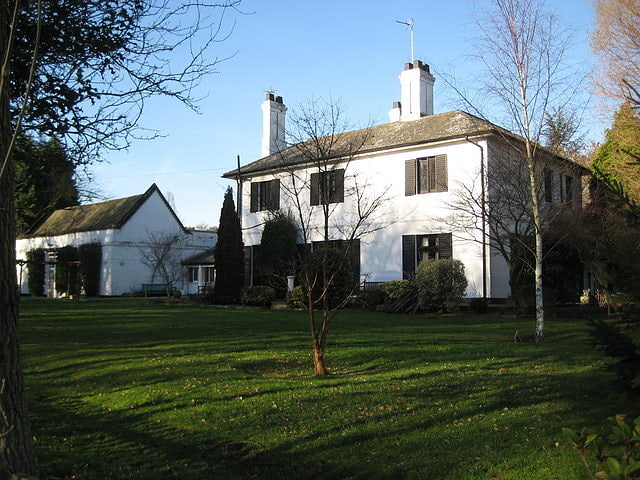
Debden House is a residential adult education college, conference centre and campsite located in Loughton, Essex, England. The house is owned and operated by Newham London Borough Council.
The house is used as a conference centre with residential facilities during the week, and is available for hire. Newham Borough Council use the house extensively for staff training, team-building exercises and conferences. An adult education college operates from Debden House on weekends, offering a range of 2-day courses throughout the year. Residential accommodation is available for students.
The campsite at Debden House is open from May to September every year. Facilities include a shop, cafe, washing and drying machines, electric points, toilets and showers.[8]
Loughton Arts Centre

Gift shop, Shopping, Museum
Address: 187 High Rd, IG10 4LF Loughton
Linder's Field
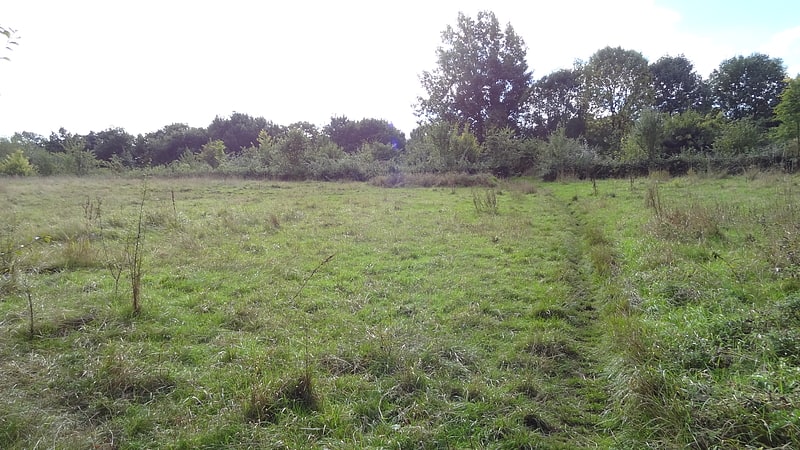
Nature reserve in Buckhurst Hill, England. Linder's Field is a 3.6 hectare Local Nature Reserve in Buckhurst Hill in Essex. It is owned and managed by Epping Forest District Council.
Linder's Field is a surviving fragment of an ancient wood called Pluckett's Wood. It is named after its former owner, Charles Linder. In 1956 he granted the site to Chigwell Council (which later became Epping Forest Council) for 35 years, and in 1963 his family handed over the site permanently. It was designated a Local Nature Reserve in 2000.
The site has ancient woodland, scrub, grassland and ponds. The ponds have frogs, toads and newts, and bats forage in the hedgerows. Plants include bluebells and wood anemone. It also has a wildflower meadow which is an important habitat for many species of invertebrates, birds and mammals.
The main entrance is in Roebuck Lane.[9]
Home Mead
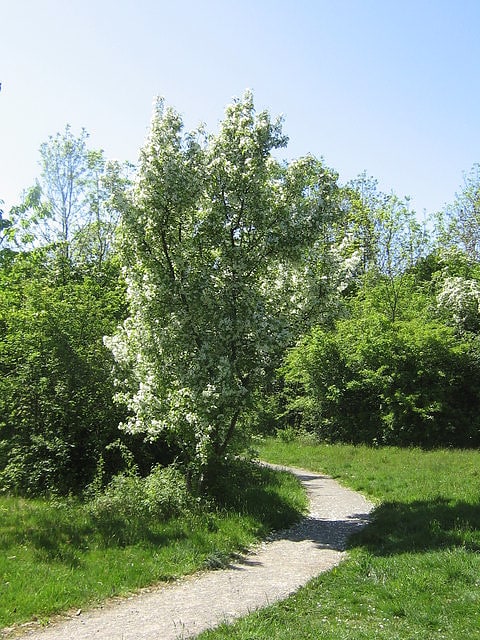
Nature reserve in Loughton, England. Home Mead is a 1.8 hectare Local Nature Reserve in Loughton in Essex. It is owned and managed by Epping Forest District Council.
This site has woodland, scrub and acid grassland. The woodland has spread into part of the grassland. A wildflower meadow has yellow tormentil and blue bugle, both of which provide food for butterflies. Plants is the scrub area include bird's-foot trefoil and ragged robin.
There is access from England's Lane.[10]